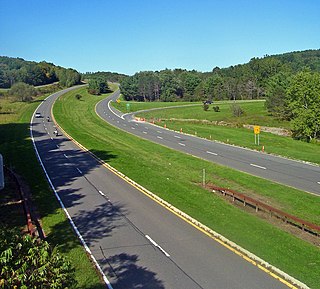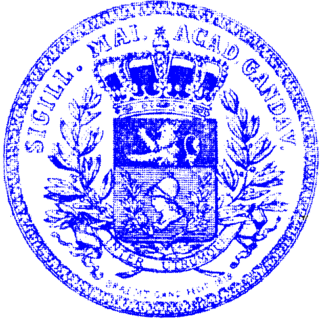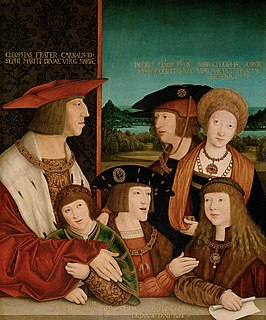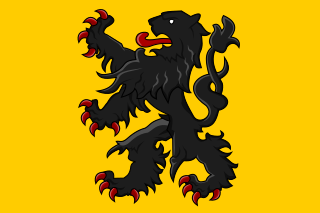
Ghent is a city and a municipality in the Flemish Region of Belgium. It is the capital and largest city of the East Flanders province, and the second largest municipality in Belgium, after Antwerp. The city started as a settlement at the confluence of the Rivers Scheldt and Leie and in the Late Middle Ages became one of the largest and richest cities of northern Europe, with some 50,000 people in 1300. It is a port and university city.

The Ghent Altarpiece is a very large and complex 15th-century polyptych altarpiece in St Bavo's Cathedral, Ghent, Belgium. It was begun c. the mid-1420s and completed before 1432, and is attributed to the Early Netherlandish painters and brothers Hubert and Jan van Eyck. The altarpiece is considered a masterpiece of European art and one of the world's treasures.

Ghent is a town in Columbia County, New York, United States, with a ZIP code of 12075. The population was 5,402 at the 2010 census. Ghent is centrally located in the county and is northeast of the city of Hudson.

Ghent University is a public research university located in Ghent, Belgium. It was established in 1817 by King William I of the Netherlands. After the Belgian revolution of 1830, the newly formed Belgian state began to administer the university. In 1930, the university became the first Dutch-speaking university in Belgium, whereas French had previously been the standard academic language. In 1991,it was granted major autonomy and changed its name accordingly from State University of Ghent to its current designation.

Waterzooi is a stew dish from Belgium and originating in Flanders. The second part of the name derives from the Middle Dutch terms "sode", "zo(o)de" and "soot", words referring to the act of boiling or the ingredients being boiled. It is sometimes called Gentse Waterzooi which refers to the Belgian town of Ghent where it originated. The original dish is often made of fish, either freshwater or sea,, though today chicken waterzooi (Kippenwaterzooi) is more common. The most accepted theory is that rivers around Ghent became too polluted and the fish there disappeared. Charles V, Holy Roman Emperor ate the rich dish, even after suffering from gout.

Koninklijke Atletiek Associatie Gent, often simply known as Ghent or by their nickname De Buffalo's, is a Belgian football, track and field and field hockey club, based in the city of Ghent, East Flanders. Their football team have been playing in the Belgian Pro League since the 1989–90 season. They won the national league once, in 2014–15, in addition to three Belgian Cup victories. Ghent played their home matches in the Jules Ottenstadion in Gentbrugge from 1920 until 2013, when they moved to the Ghelamco Arena. Their team colours are blue and white. The principal sponsor is the financial institution VDK NV.

The Fountain of Life, or in its earlier form the Fountain of Living Waters, is a Christian iconography symbol associated with baptism and/or eucharist, first appearing in the 5th century in illuminated manuscripts and later in other art forms such as panel paintings.

The Battle of Gavere was fought near Semmerzake in the County of Flanders on July 23, 1453, between an army under the Philip the Good of Burgundy and the rebelling city of Ghent. The battle ended the Revolt of Ghent.

The Revolt of Ghent was an uprising by the citizens of Ghent against the regime of the Holy Roman Emperor and Spanish king Charles V in 1539. The revolt was a reaction to high taxes, which the Flemish felt were only used to fight wars abroad. Charles marched his army into the city the following year and the rebels surrendered without a fight. Charles humiliated the rebels by parading their leaders in undershirts with hangman nooses around their necks. Since then Ghent citizens informally call themselves "noose bearers".
The Holy Corner is the English name for the Oud begijnhof or Old Saint Elisabeth beguinage in Ghent, Belgium. It is one of three beguinages in the city - the other two are the new Saint Elisabeth beguinage in the suburb of Sint-Amandsberg and Our Lady Ter Hooyen in the Lange Violettenstraat. Both Saint Elisabeth beguinages were named after Elisabeth of Hungary, also known as Saint Elisabeth of Thuringia.

Christ Carrying the Cross is a painting attributed to a follower of Hieronymus Bosch. It was painted in the early 16th century, presumably between 1500 and 1535. The work is housed in the Museum of Fine Arts in Ghent, Belgium.

Paul Joseph, Count de Smet de Naeyer was a Belgian Catholic Party politician.

The former Roman Catholic Diocese of Ypres, in present-day Belgium, existed from 1559 to 1801. Its seat was Saint Martin's Cathedral in Ypres. In 1969 it was reconstituted as a titular see.
Revolt of Ghent may refer to:

Jozef De Kesel is a Belgian cardinal of the Roman Catholic Church and Archbishop of Mechelen-Brussels. He served previously as Bishop of Roman Catholic Diocese of Bruges since his installation on 10 July 2010 On 6 November 2015 Pope Francis named him to succeed André-Joseph Léonard as Archbishop of Mechelen-Brussels and Primate of Belgium. He was installed at a Mass attended by the Belgian monarch on 12 December 2015.

The Madonna Standing is a small painting by the Flemish artist Rogier van der Weyden dating from about 1430–1432. It is the left panel of a diptych held in the Kunsthistorisches Museum (KHM), Vienna since 1772. The right panel portrays St. Catherine and is also attributed by the KHM to van der Weyden, but is inferior in quality and generally regarded as by a workshop member.

In the period 1482–1492, the cities of the County of Flanders revolted twice against Archduke Maximilian of Austria, who ruled the county as regent for his son, Philip the Handsome. The revolts were rooted in the cities' desire to maintain the autonomy that they had wrested from Philip's mother and predecessor, Mary of Burgundy, which Maximilian threatened to curtail. Both revolts were ultimately unsuccessful.

The County of Flanders was a historic territory in the Low Countries.
















